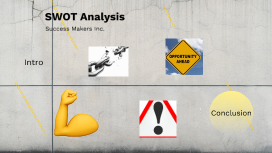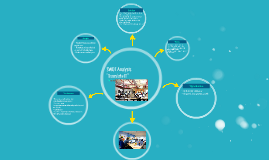SWOT analysis presentation
Transcript: REFERENCES SWOT MATRIX Teaching and Caring for Adolescents: Policy 13 Teaching and Caring for Adolescents: Policy 13 Tarik Hall Indian River State College NUR4837 Healthcare Policy and Economics Professor Maria Seidel, DNP September 17th, 2024 STRENGTHS This policy follows a comprehensive approach as it addresses multiple critical health issues, including drug abuse, obesity, diabetes, and sexual infections, following many alternatives to combat these issues. Utilizes a multidisciplinary team (nurses, social workers, educators) that works together to accomplish these goals, promoting teamwork, which improves overall patient outcomes. Enhances the training of healthcare professionals to understand adolescent development better, leading to improved care and support. Emphasizes prevention through education and awareness, which can help mitigate health risks before they become more severe. By promoting healthy behaviors and providing education, the policy aims to create long-term improvements in health outcomes. Emphasizes the development of culturally sensitive and linguistically appropriate services, which increases the accessibility and relevance of health interventions for diverse populations. STRENGTHS WEAKNESSES Policy implementation may require substantial resources, including funding, training, and personnel, which could be challenging to secure. Some stakeholders might resist changes or feel the policy does not fully address their specific needs or concerns, causing non-compliance with the added interventions. The interdisciplinary approach may result in fragmented service delivery if coordination among different service providers is not effectively managed, which could lead to gaps in care and support. The policy's long-term effectiveness might be uncertain, as it may take years to see measurable improvements in health outcomes and behavioral changes. Lack of knowledge and awareness of these new changes being implemented may prevent adolescents from participating because they are unaware of the new programs. Adolescents who have limited access to resources may have trouble adopting this policy into their lives. WEAKNESSES According to this article, "Evidence shows that SDOH and social risk factors such as access to care, health insurance, food security, access to transportation, neighborhood deprivation, and economic disadvantage have been found to negatively impact outcomes for racial/ethnic minority adolescents [16-22], lending to racial/ethnic health disparities across health indices" (Monroe et al., 2023, para. 6). OPPORTUNITIES This policy has the opportunity to engage the community in health promotion and education, fostering stronger support and involvement from local organizations and families. There is potential to form partnerships with local schools, community centers, and healthcare providers to enhance program reach and effectiveness. For example, the schools can make daily announcements to the students to introduce the new programs and provide information about how to enroll. There is an opportunity to obtain grants or additional funding from public health organizations, non-profits, or government programs focused on adolescent health. This policy can be presented at city council or state legislator meetings to ensure that the ideas are heard and support is garnered. If this policy is successful in the community, successful implementation could serve as a model for similar policies in other communities or regions, broadening the policy’s impact. OPPORTUNITIES As stated in this article, "The values that are imbedded in our profession provide the ideal foundation for nurses to engage and positively impact the health and well-being of the communities in which we live. Nurses also have a unique perspective gained from clinical experience that can provide valuable insight into the complexities of our health care delivery system for our community"(Bradley, 2024, para. 2) THREATS THREATS Certain legislative restrictions or lack of funding for public health initiatives may impede the implementation of the policy. For example, state budget cuts affecting health education programs. Persistent socioeconomic challenges, such as inadequate housing or food insecurity, may undermine the effectiveness of health interventions. Differences in cultural attitudes towards health issues could impact program acceptance and effectiveness. Changes in health trends or emerging health crises, for example, new substance abuse trends, may require ongoing adjustments to the policy. If stakeholders, such as the adolescents or schools, do not fully support the policy, it may face challenges in gaining traction in the community. According to this 2024 Florida statute, "The Department of Health shall have the responsibility, in cooperation with the Department of Education, to supervise the administration of the school health services program and perform periodic program reviews" (The Florida Legislature, 2024). This piece

















